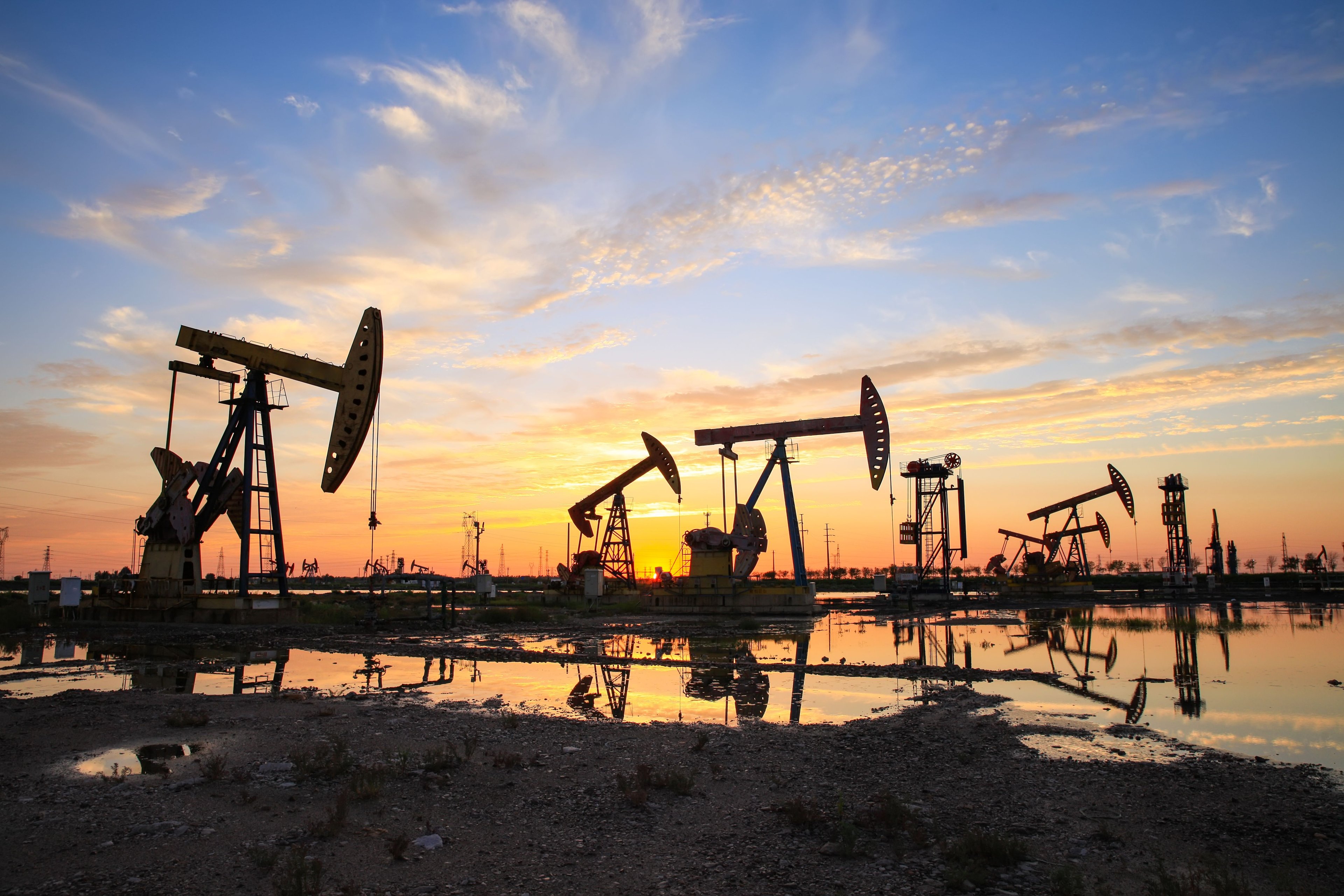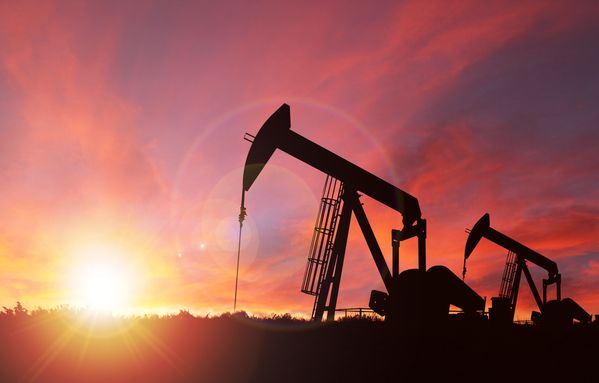Wall Street has become increasingly frustrated with Helmerich & Payne's (HP +0.05%) results as of late. In 2017, the contract petroleum driller's stock has declined more than 40% as the company hasn't been able to translate the rapid rise in drilling activity into bottom-line results. Some of the reasons for this were well known, though, and management even let the market know that profitability would be subdued during this time.
In the company's most recent conference call, management started to hint that things will start to look better in the second half of the year. Here is a selection of quotes from the call that should give you an idea of what investors can expect from Helmerich & Payne's over the next several quarters and, more importantly, what we can expect from the land rig market over the next few years.

Image source: Getty Images.
Check out our new toy
The land rig market has been rather quiet lately. So many companies in this industry have been focused on either repairing their balance sheets or on upgrading their existing fleets that there has barely been any appetite for acquisitions or mergers. This past quarter, though, Helmerich & Payne engaged in a little bit of outside-of-the-box thinking. Here's CEO John Lindsay explaining the company's most recent acquisition and why it fits into the business.
On June 2, 2017, the company closed on the acquisition of MOTIVE Drilling Technologies. MOTIVE has developed a Bit Guidance System that utilizes cognitive computing to improve directional drilling, decision automation and optimization.
...
Directional drillers are struggling to keep pace with increased drilling speeds, while delivering the accuracy required to place a wellbore in the desired sweet spot to maximize production. Training and the standardization of directional drilling approaches to complex problems is required to meet this challenge, particularly as horizontal wells grow in lateral length and complexity. Technology, like the MOTIVE team has developed, is making predictable and repeatable well manufacturing a reality for complex, unconventional horizontal well programs.
It's incredible to think how fast a company can drill a new well these days. Just a few years ago, drilling a new well in 30 days was considered an accomplishment. Today, companies are completing 10,000- to 12,000-foot wells in less than 10 days. Investments like this one could be the next step toward further reducing the number of drilling days. For Helmerich & Payne, that means the ability to command higher prices for its rigs, and generate better margins.
Costs coming down as expected
Expenses have been a drag on Helmerich & Payne's performance over the past several quarters. Even though the company has put several new rigs into the field, that has not translated to bottom-line improvements due to the costs of reactivating idle rigs as well as the costs of maintaining those that are still idle. Management had previously assured us that these expenses would drop as the pace of rig activations came down. Last quarter, that narrative started to play out. As CFO Juan Pablo Tardio noted:
[T]he average rig expense per day decreased by about 9% to $14,256, mostly driven by a lower number of activated rigs generating upfront expenses as compared to the prior quarter.
...
The average rig expense per day level is expected to significantly decrease to roughly $13,700, as rig start-up expenses sequentially have a much lower level of impact on the total average during the fourth fiscal quarter. Expenses corresponding to our remaining stacked AC drive FlexRigs represent approximately 3% to 4% of the mentioned average rig expense estimate of $13,700 per day.
When asked how much more the company could squeeze out of that per rig cost, Tardio and Lindsay both suggested that things can't get much lower from here. Rig market growth is slowing down, so reactivation expenses will decline even more, but that means idle fleet expenses will remain the same. Also, given the speed at which producers are drilling wells, rig owners are running through expendable and replacement equipment at a much faster rate. The more likely path that could lead to better bottom line results would involve the company putting itself in position to charge higher prices, which would in turn offset its costs.
The first sign of dividend trouble?
Over the past few quarters, Helmerich & Payne's free cash flow has declined quite a bit. Some of that was due to higher-than-anticipated capital spending to upgrade rigs, but it also had to do with those lower margins. This has some investors and analysts concerned about H&P's ability to maintain its dividend, which currently yield 6%. This is a big deal, because the company has a 44-year streak of growing dividends.
Tardio addressed this concern head-on in his prepared remarks, and provided as much detail as one could expect at this point in time.
[G]iven the strength of our balance sheet and backlog, and the company's flexibility to adjust capital expenditures as a function of market conditions, we remain well-positioned to sustain regular dividend levels during the foreseeable future. Although it may be choppy, we do expect a continued recovery in the business during the next few years. Nevertheless, if market conditions were to deteriorate toward an expectation of a prolonged down-cycle, we will do our best to describe potential changes to our approach to the dividend before implementing such changes.
As mentioned in the past, it is unlikely that the company would issue additional debt with the sole purpose of sustaining or increasing current dividend levels.
So for now, we can assume that the current payout will remain in place since rig-upgrade expenses will decline a bit in the second half of the year. If oil prices head back down, though, management has at least said it will give investors a heads up before changing course on its long-time Dividend Aristocrat policy.
No new rigs
When it comes to drilling shale, companies have gotten more skilled, and as a result are able to do more with less. Today, the active land rig count in the U.S. is half what it was in 2014, but with that equipment, drillers have been able to grow U.S. production by 600,000 barrels per day over the past nine months. This means there is a lot of idle rigs out there. According to Lindsay, this means we won't see many opportunities to add new rigs to fleets.
I think, right now, at least with the rig counts that we have, the industry is going to be pretty hard-pressed to get into a new build mode, because I think new-build economics, just the pricing that's required is a long way from where we need to be.
What makes this statement interesting is that some of H&Ps competitors are building new rigs. Granted, there are contracts in place for those rigs when they're completed, but one does have to question whether there is a lot of room to add rigs in the U.S. market.
Where are the opportunities to grow?
So if adding new rigs to the fleet isn't where Helmerich & Payne expects to grow from here, then where might its growth come from? When asked this question, Lindsay suggested his company is positioned to take even more market share.
[I]f you look at the ongoing rig count that we have right now, I don't know if it's 950, 970 depending on whose rig count service you look at. And you look at the number of rigs that are drilling horizontal and directional wells. And again, to keep in mind that that complexity of the well continues to increase. About 630 of the rigs that are drilling those wells are AC drive and about half of those are super-spec.
And then there's another 250 or 260 or so SCR and mechanical rigs that are drilling those same longer lateral and more complex wells. I'm assuming maybe they're not as complex. But I think when you consider that those rigs – that base rig design is a 1960s, 1970 design and technology, you have to believe that we're going to continue to see a trend toward more AC drive technology.
Since 2014, Helmerich & Payne has increased its market share from 15% to 20%, and its piece of the pie is even larger in the super-specification rig segment. If the company can continue to push older rigs into retirement, then it could see some more growth in the U.S.




